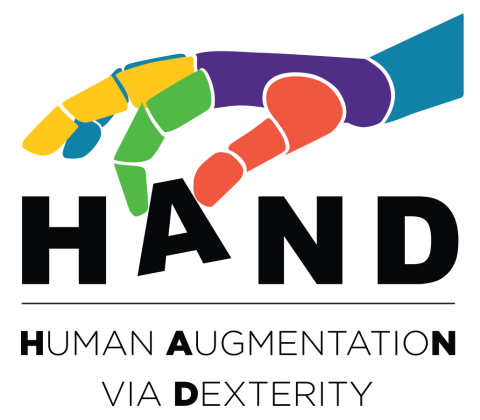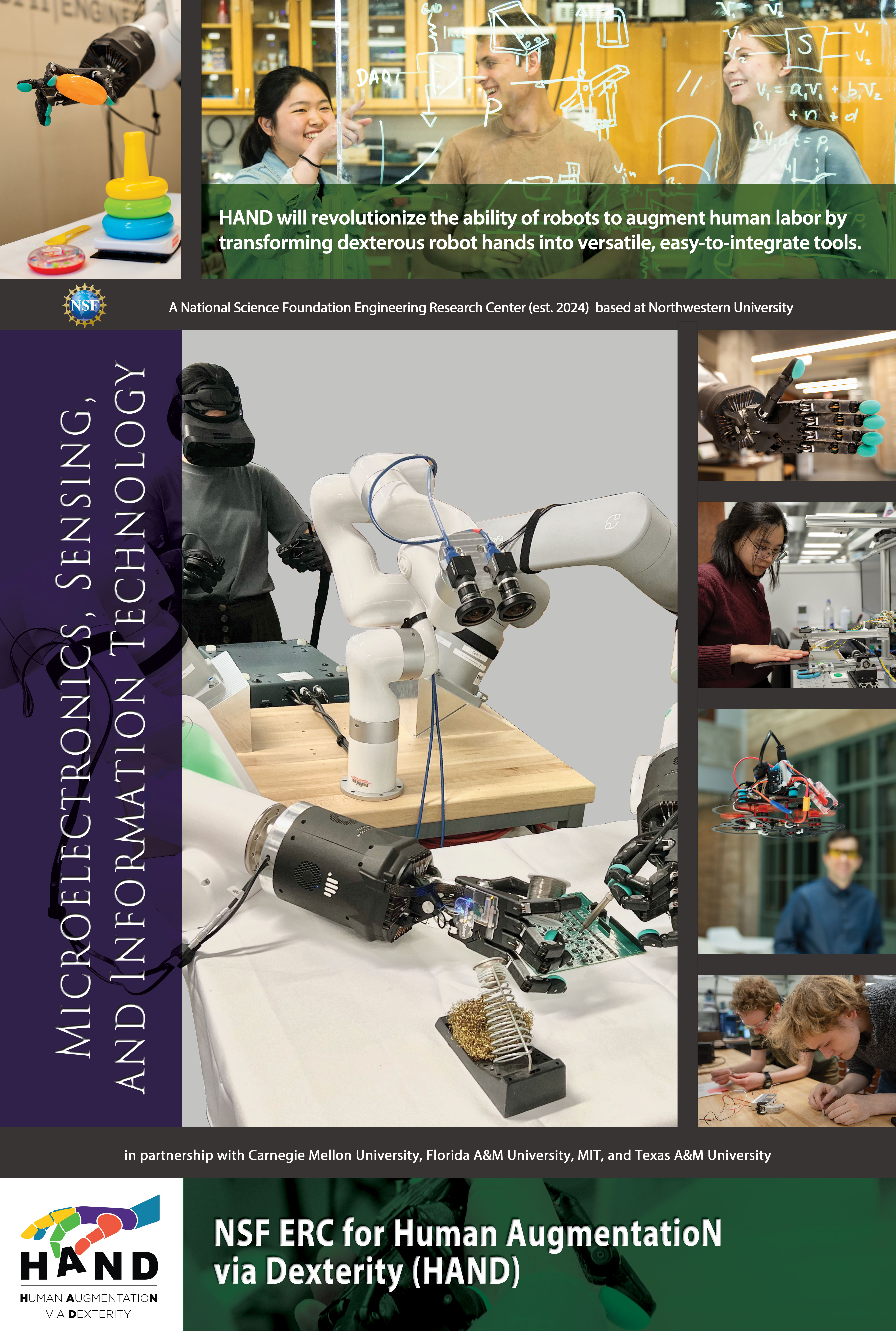NSF ERC for Human AugmentatioN via Dexterity

The work of the NSF ERC for Human AugmentatioN via Dexterity (HAND) will lead to versatile, dexterous robotic arms and hands that address a broad range of human, industry, and societal needs. The purpose is to create robot manipulators that are widely useful "out of the box." Today, robot arms become useful only after an expensive integration process, making them inaccessible to many who might benefit, including most of the country's quarter-million small and medium-sized enterprises. To be useful out of the box, robots must have truly versatile end-effectors ("hands"), AI-powered dexterous skills, and intuitive interfaces that trained workers can use immediately. Training must be widely accessible and career paths must be available to learners from a young age. Firms of all sizes must be able to adopt these robots, and workers of all education levels, high school through postgraduate, must be able to use them. The breadth and structure of the ERC program will enable HAND to address these technical, workforce, and ecosystem challenges, ultimately democratizing access to robot dexterity. Robots will no longer be limited to high-volume, highly repeatable operations; they will find application in low-volume high-mix manufacturing, food processing, remote handling of precious or dangerous materials, assistance for individuals with motor impairments, and many other areas. The Center will bring together experts in materials, manufacturing, manipulation, soft robotics, artificial intelligence, machine perception, modeling, haptics, human-robot interaction, participatory design and research, team science, education, law, and the social sciences to overcome fundamental barriers to dexterity. These include achieving large scale integration of actuators and sensors, building robust visuo-tactile-motor skills that are composable into complex behaviors, and low-code programming by non-roboticists. The result will be an engineered system--hands, skills, interface, and training materials--that dramatically advances robotic manipulation and its accessibility to diverse user populations.
Microelectronics and IT
Microelectronics, Sensing, and IT
Location
Lead Institution
Start Year
Website
Fact Sheet
Core Partners
Center News and Achievements
Locations
NSF ERC for Human AugmentatioN via Dexterity

The work of the NSF ERC for Human AugmentatioN via Dexterity (HAND) will lead to versatile, dexterous robotic arms and hands that address a broad range of human, industry, and societal needs. The purpose is to create robot manipulators that are widely useful "out of the box." Today, robot arms become useful only after an expensive integration process, making them inaccessible to many who might benefit, including most of the country's quarter-million small and medium-sized enterprises. To be useful out of the box, robots must have truly versatile end-effectors ("hands"), AI-powered dexterous skills, and intuitive interfaces that trained workers can use immediately. Training must be widely accessible and career paths must be available to learners from a young age. Firms of all sizes must be able to adopt these robots, and workers of all education levels, high school through postgraduate, must be able to use them. The breadth and structure of the ERC program will enable HAND to address these technical, workforce, and ecosystem challenges, ultimately democratizing access to robot dexterity. Robots will no longer be limited to high-volume, highly repeatable operations; they will find application in low-volume high-mix manufacturing, food processing, remote handling of precious or dangerous materials, assistance for individuals with motor impairments, and many other areas. The Center will bring together experts in materials, manufacturing, manipulation, soft robotics, artificial intelligence, machine perception, modeling, haptics, human-robot interaction, participatory design and research, team science, education, law, and the social sciences to overcome fundamental barriers to dexterity. These include achieving large scale integration of actuators and sensors, building robust visuo-tactile-motor skills that are composable into complex behaviors, and low-code programming by non-roboticists. The result will be an engineered system--hands, skills, interface, and training materials--that dramatically advances robotic manipulation and its accessibility to diverse user populations.
|
LocationEvanston, Illinois
|
Lead InstitutionNorthwestern University
|
Start Year |
Website |
Fact Sheet |
Core PartnersCarnegie Mellon University
Florida A&M University
Texas A&M University
|
Center News and Achievements
Locations
NSF ERC for Human AugmentatioN via Dexterity

The work of the NSF ERC for Human AugmentatioN via Dexterity (HAND) will lead to versatile, dexterous robotic arms and hands that address a broad range of human, industry, and societal needs. The purpose is to create robot manipulators that are widely useful "out of the box." Today, robot arms become useful only after an expensive integration process, making them inaccessible to many who might benefit, including most of the country's quarter-million small and medium-sized enterprises. To be useful out of the box, robots must have truly versatile end-effectors ("hands"), AI-powered dexterous skills, and intuitive interfaces that trained workers can use immediately. Training must be widely accessible and career paths must be available to learners from a young age. Firms of all sizes must be able to adopt these robots, and workers of all education levels, high school through postgraduate, must be able to use them. The breadth and structure of the ERC program will enable HAND to address these technical, workforce, and ecosystem challenges, ultimately democratizing access to robot dexterity. Robots will no longer be limited to high-volume, highly repeatable operations; they will find application in low-volume high-mix manufacturing, food processing, remote handling of precious or dangerous materials, assistance for individuals with motor impairments, and many other areas. The Center will bring together experts in materials, manufacturing, manipulation, soft robotics, artificial intelligence, machine perception, modeling, haptics, human-robot interaction, participatory design and research, team science, education, law, and the social sciences to overcome fundamental barriers to dexterity. These include achieving large scale integration of actuators and sensors, building robust visuo-tactile-motor skills that are composable into complex behaviors, and low-code programming by non-roboticists. The result will be an engineered system--hands, skills, interface, and training materials--that dramatically advances robotic manipulation and its accessibility to diverse user populations.
